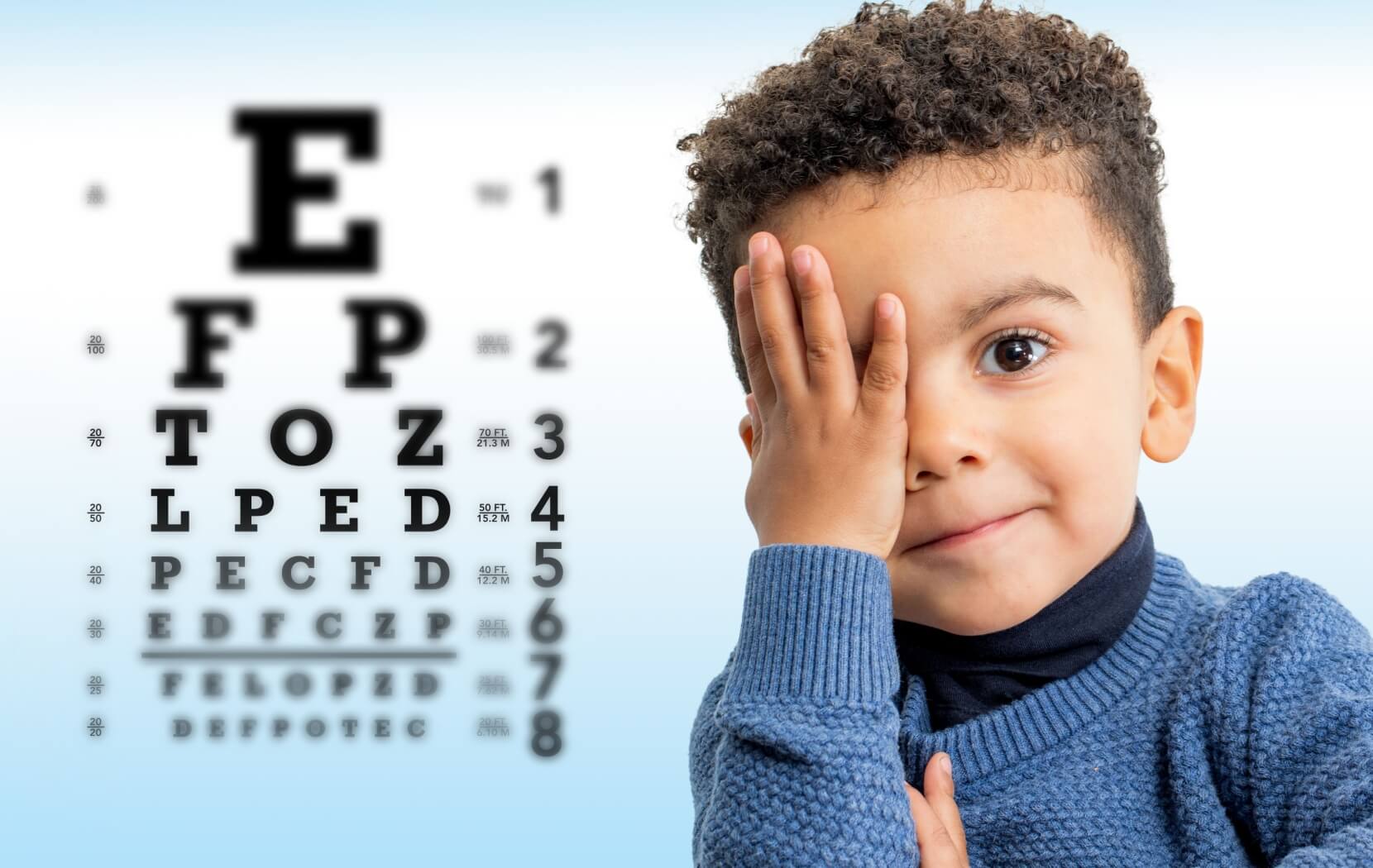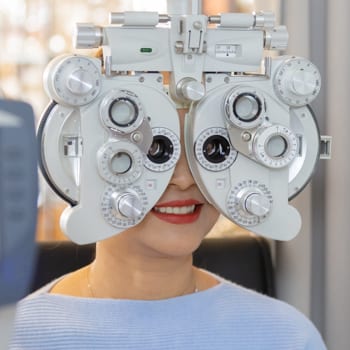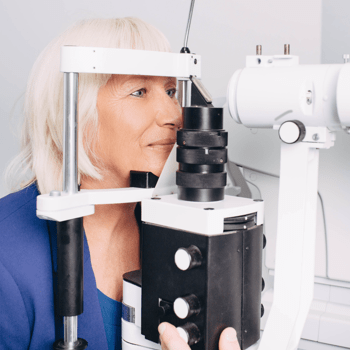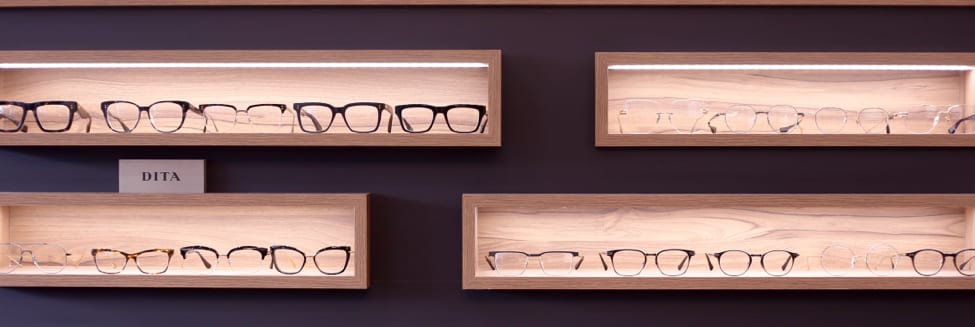Have you found yourself squinting to make sense of distant objects or struggling to read signs at a distance? Vision problems can be frustrating, affecting everything from work to simple leisure activities. Two common vision conditions that impact how we see are myopia and astigmatism.
The biggest difference between myopia and astigmatism is that myopia causes issues with distance vision, while astigmatism affects both near and distance vision.
Let’s have a more in-depth look at what this means.
What is Myopia?
Myopia, commonly known as nearsightedness, is a condition where you can see objects clearly when they are close to you, while faraway objects appear blurry. For example, while reading a book may not pose any challenges, seeing the whiteboard or the television screen might.
This condition is usually caused by the elongation of the eyeball, which results in light being focused in front of the retina instead of directly on it. Environmental factors like extensive screen time and genetic predisposition are frequently linked to myopia. Studies show nearly 30% of the world’s population has this condition. By the year 2050, it is projected that 50% of the world’s population will be myopic.
The most common signs of myopia include:
- Blurry vision when looking at objects in the distance.
- Squinting to see clearly.
- Headaches
- Eyestrain
- Rubbing eyes
With AI-assisted screening technologies like RetinaLogik, optometrists can detect myopia progression earlier and track axial length changes over time, making it easier to manage myopia effectively.
What is Astigmatism?
Astigmatism is a condition responsible for blurred or distorted vision at any distance. Astigmatism results from an irregular curvature of the cornea or lens, which prevents light from focusing evenly on the retina. This results in objects appearing blurry at any distance.
Most people with astigmatism are born with it, although it can also develop after an eye injury, disease, or surgery. What’s reassuring is that it’s frequently accompanied by other types of refractive errors like myopia or hyperopia, making treatment straightforward.
Common signs of astigmatism include:
- Blurred and distorted vision
- Headaches
- Eyestrain
- Squinting
- Difficulty seeing at night
What’s the Difference Between Myopia & Astigmatism?
The most notable difference between myopia and astigmatism is how it affects your vision. Myopia only affects distance vision, making it hard to see things that are far away. Astigmatism affects both distance and close-up vision, making it harder to see at any distance.
The other major differences between astigmatism and myopia involves their causes and how these conditions progress.
Eye Shape
Myopia is usually caused by the eyeball being too long, leading to light being improperly focused on the back of the eye. Myopia can also be caused by irregularities in the shape of the eye’s lens or cornea, but this is less common.
Astigmatism is usually caused by irregularities in the shape of the eye’s lens or cornea. This causes issues when focusing light on the back of the eye, leading to blurry vision.
Progression
Myopia usually develops in childhood and progresses into early adulthood. Usually, myopia stops progressing when the eyes stop growing around age 20-21.
Astigmatism is usually present at birth but can also develop after experiencing an eye injury or eye trauma. Astigmatism is a progressive condition and may worsen continuously through adulthood.
How Do Optometrists Treat Myopia & Astigmatism?
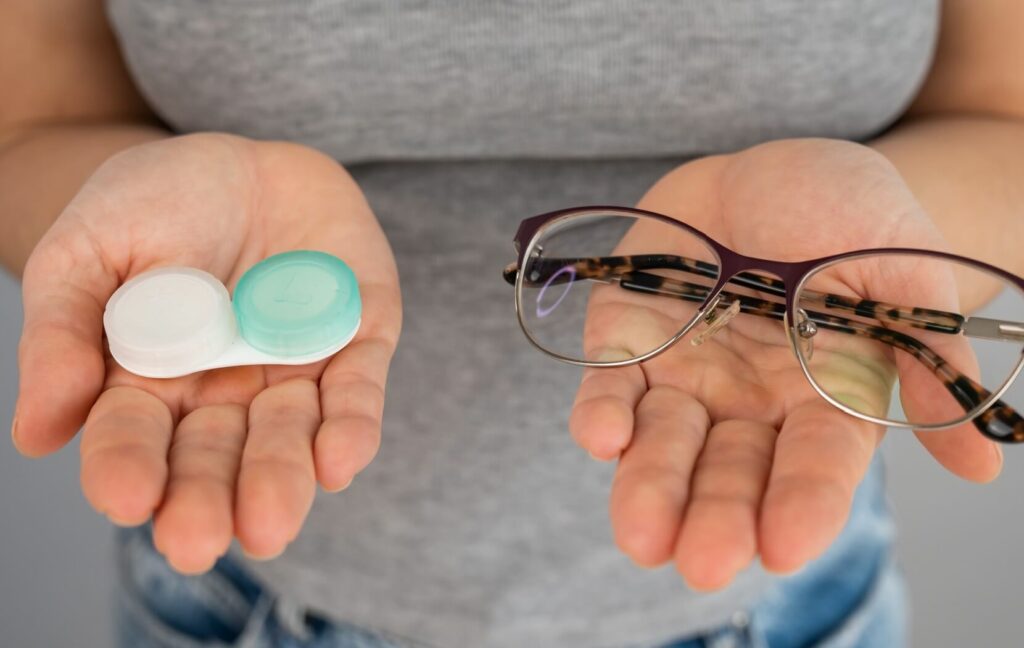
There are many ways to treat and manage both myopia and astigmatism. The first step to getting treatment for myopia and astigmatism is scheduling a comprehensive eye exam. Optometrists will use a variety of tests to identify refractive errors like myopia and astigmatism. Measuring the length of the eyeball (axial length/biometry) has become an invaluable tool and metric to assess risks of myopia as well as track progression.
With modern advancements like RetinaLogik, eye doctors can now track axial length and detect subtle changes, allowing for earlier interventions to slow progression.
Myopia Controls & Treatments
Since myopia tends to progress in childhood and stabilizes in early adulthood, treating childhood myopia focuses on slowing and minimizing myopia’s progression. Childhood treatments for myopia include:
- Specialized myopic defocus lenses like MiSight, MiyoSmart, and Stellest.
- Orthokeratology contact lenses which temporarily reshape the cornea overnight.
- Low-dose atropine eyedrops can slow the progression of myopia.
- Contact lenses like MiSight and Abiliti 1 day disposable lenses.
For adults, myopia treatments focus on correcting vision, as myopia is no longer progressing. These include:
- Prescription eyeglasses and contact lenses.
- Orthokeratology contact lenses.
- Corrective laser eye surgery like LASIK.
- Lifestyle modifications (20-20-20 rule).
Astigmatism Controls & Treatments
Astigmatism treatments differ from myopia treatments. Because of the differences in how astigmatism progresses, childhood astigmatism treatments don’t focus on slowing progression like myopia treatments do. Common astigmatism treatments include:
- Prescription eyeglasses and toric contact lenses
- Corrective laser eye surgery (LASIK, PRK) for adults.
The Role of AI in Early Detection
With rising myopia rates worldwide, early detection is crucial for effective management. RetinaLogik’s AI-powered screenings help our optometrists:
- Detect myopia and astigmatism earlier through advanced imaging.
- Track axial length changes over time, improving myopia control strategies.
- Enhance monitoring of refractive errors, allowing for timely interventions.
Get Started On Your Eye Health Journey
With the many treatment options available today, living with astigmatism or myopia doesn’t have to slow you down. The first step to taking care of your eye health is to schedule a comprehensive eye exam. At Foresee Eyecare, we offer eye exams and eyewear options for the whole family.
Our professional team is happy to help you find solutions for your eye health needs. To learn more about our services you can contact us or book an appointment today!

